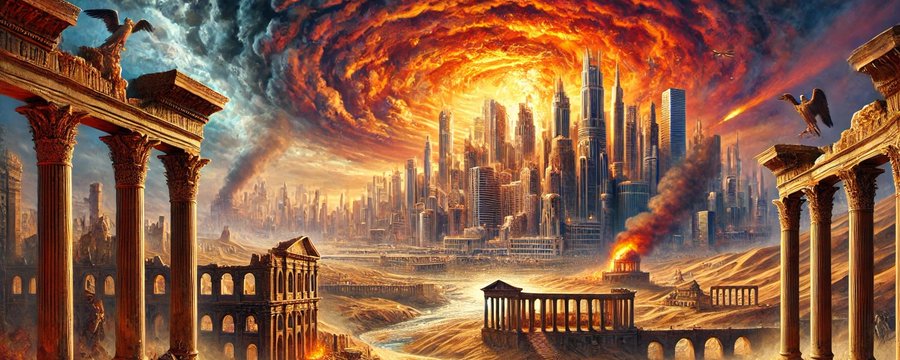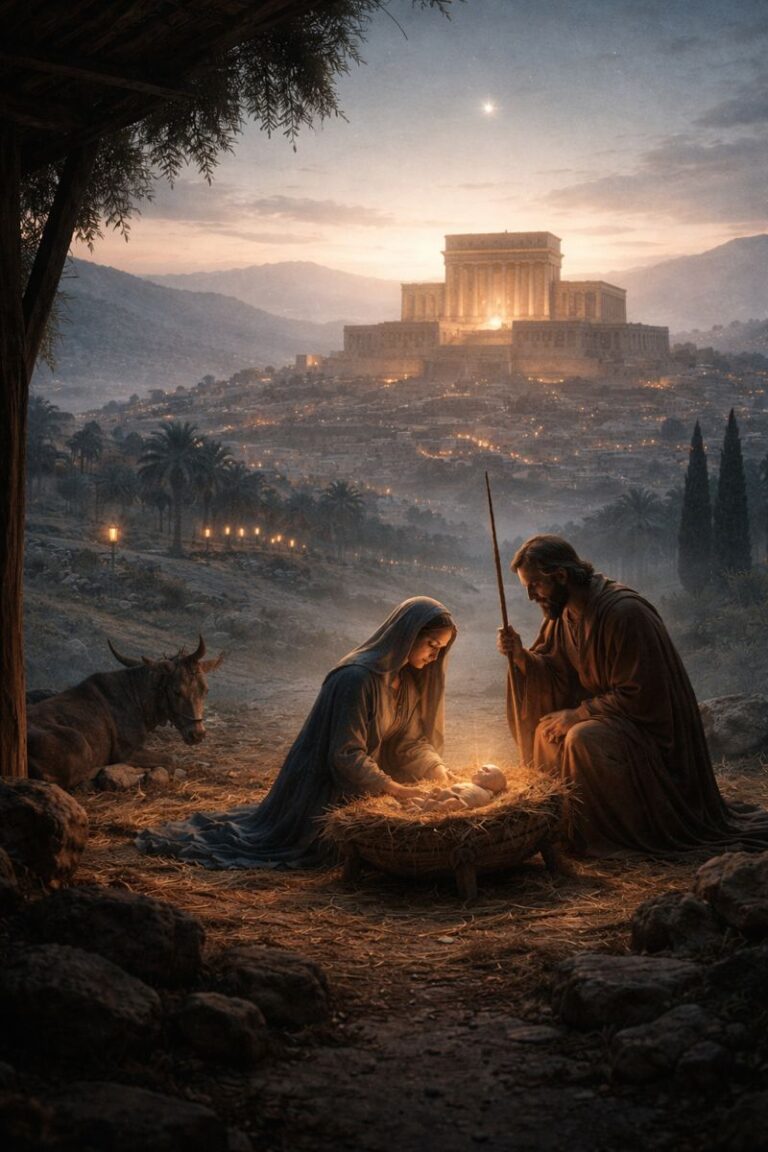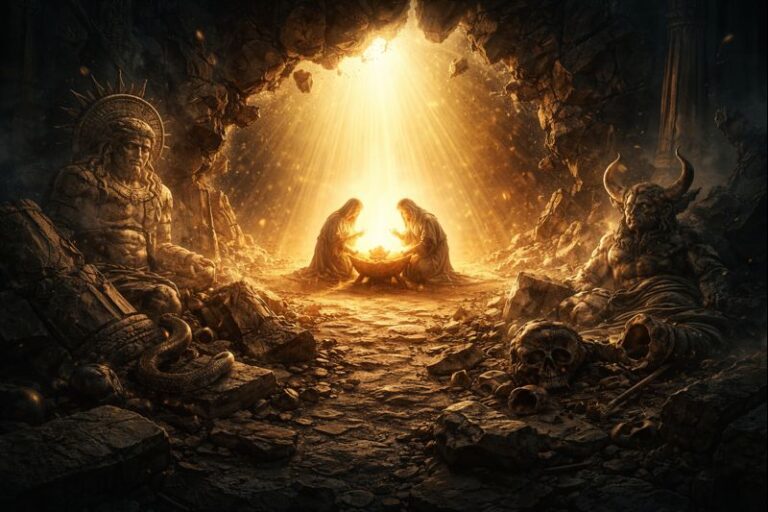
The Islamic Republic of Iran, long a fixture in the geopolitics of the Middle East, appears to be facing an unprecedented crisis. Internally weakened by unrest, economically battered by sanctions, and regionally isolated due to the collapse of its Axis of Resistance, the regime’s hardline leaders may see themselves as running out of time to retain power. When theological motivations meet desperation, the potential for catastrophic decisions rises exponentially, especially when weapons of mass destruction (WMDs) are part of the equation. First, though, this is in no way a criticism of Israel attacking Iran. They had their intelligence and did what they needed to to prevent Iran from having a large number of usable devices.
A Regime on the Brink
Iran’s internal and external pressures have reached a boiling point:
- Internal Unrest: The Iranian regime has struggled for years to contain protests fueled by economic hardship, corruption, and social repression. These movements have intensified in 2025, with new demonstrations erupting after fuel hikes and food shortages around Nowruz. The regime’s brutal crackdowns have only further inflamed public outrage.
- Axis of Resistance in Decline: Iran’s regional strategy, which relies on proxy forces like Hezbollah and militias in Iraq and Syria, is unraveling. Hezbollah has suffered heavy losses in its recent conflict with Israel, eroding its effectiveness. Iraq’s most recent elections have empowered nationalist factions that reject Iranian control, while Syria has tilted toward Gulf Arab influence, diminishing Iran’s foothold.
- Economic Windfall Amid Desperation: The unfreezing of $10 billion in Iranian funds provided a temporary reprieve. However, this lifeline appears to be viewed not as a stabilizing opportunity, but as fuel for bold, potentially catastrophic moves. Additional sanctions, imposed after cyberattacks and covert operations, have re-tightened the economic vise.
Alliances with Russia and North Korea
- Russia’s Growing Desperation: Facing battlefield setbacks in Ukraine and growing financial strain, Russia has deepened ties with Iran. Tehran continues supplying drones and missile parts in exchange for air defense systems and, reportedly, nuclear-related assistance. With Western sanctions tightening around both regimes, mutual desperation drives increasingly dangerous cooperation. It is also not out of the realm of possibility that a desperate Russia wouldn’t sell actual WMDs to Iran. The question there is whether or not Russia has working devices to sell, as they have not had a nuclear test since the fall of the Soviet Union and have gutted spending on upkeep.
- North Korea’s Role: North Korea has restarted indirect military technology transfers. Intelligence sources suggest Iran may be acquiring both missile miniaturization expertise and potentially components for warheads via third-party channels.
These combined factors create a perfect storm. The regime may determine that its only remaining option is to embrace apocalyptic calculations to fulfill what it sees as its divine mission.
The Twelver Theology and Apocalyptic Calculations
Iran’s leadership adheres to Twelver Shi’ism, which holds that the Mahdi—the 12th Imam—will return during a time of global chaos. Some hardline clerics and Revolutionary Guard leaders believe they are not just awaiting this upheaval, but must actively create it. Recent rhetoric, such as Ayatollah Khatami’s claim that “global chaos is the midwife of the Mahdi,” underscores the dangerous merging of theology and geopolitics. This belief system holds that initiating widespread conflict—even global war—can hasten the Mahdi’s reappearance.
With Israel’s decapitation strike on Iran’s nuclear program and IRGC leadership, the regime may interpret the moment as their last chance to fulfill this divine mission. Rather than pursuing mere survival, they may embrace their apocalyptic theology as state strategy. This includes the potential for mass bloodshed, martyrdom, and chaos—not as a sign of failure, but as obedience. In this view, unleashing catastrophic violence is not madness—it is eschatological faithfulness.
In this mindset, fears of sanctions, pariah status, or retaliation become irrelevant. The stakes are framed in eternal terms: either catalyze the Mahdi’s return through chaos, or perish without fulfilling their holy charge.
the potential counterattack
Iran’s nuclear and missile programs are now nearing full breakout capability. A May 2025 IAEA report confirms that uranium enriched to 90% weapons-grade material has been detected at a previously undeclared site. Western intelligence assesses that Iran’s breakout window is less than three weeks.
With Israel having now carried out devastating strikes on Iranian nuclear facilities and assassinated multiple IRGC commanders, the stakes have escalated beyond speculation. The regime’s nuclear deterrent has been significantly damaged, and its military leadership crippled. In this context, Tehran could respond with a limited or symbolic WMD strike—not necessarily aimed at achieving military objectives, but to send a theological and geopolitical message in keeping with its apocalyptic worldview. The following targets become increasingly plausible under this scenario:
- Damascus: Once a crucial pillar in Iran’s Axis of Resistance, Syria is now more a liability than an asset. Years of civil war, foreign interventions, and Assad’s increasing dependence on Russia have eroded Iran’s control over Damascus. Recent regional shifts have only compounded this, with Gulf states re-establishing ties to the Assad regime and Russia asserting greater strategic dominance in the Levant. As Iran’s influence continues to wane, Tehran may come to see Damascus not as a platform for resistance but as a symbol of failed ambitions. In a desperate theological and strategic calculation, the regime could consider striking Damascus with a symbolic act of destruction—essentially offering it as a blood-soaked altar to provoke divine intervention. From their eschatological view, such a strike could destabilize the region further and help accelerate the Mahdi’s return. More disturbingly, such an act would also fulfill the ancient and still-unfulfilled prophecy of Isaiah 17:1: “Behold, Damascus will cease to be a city and will become a heap of ruins.” The destruction of Damascus, long prophesied but never realized, would send shockwaves through the Islamic and Christian worlds alike, amplifying both fear and apocalyptic expectation.
- Mecca or Riyadh: Iran’s hatred of the Saudi monarchy and disdain for Sunni control over Islam’s holiest sites make Mecca and Riyadh symbolic targets. If Iran believes that its nuclear infrastructure is being dismantled beyond repair, it may choose to launch a retaliatory strike not just as revenge, but as a way of fulfilling its Mahdist vision of purging corruption from Islam and ushering in chaos. Revelation 18:3 speaks of “Babylon” as the source of worldly luxury and corruption. Some interpreters have associated this prophetic Babylon with Saudi Arabia, particularly because of its oil wealth, global economic influence, and its centrality to Islamic geopolitics. Revelation 18:9–10 vividly describes the kings of the earth mourning as they see the smoke of her burning—imagery disturbingly reminiscent of a nuclear or high-impact strike.
Why Israel Is Unlikely to Be the First Target of WMD Retaliation
Despite its long-standing enmity with Iran, Israel remains an unlikely immediate target in a retaliatory WMD scenario:
- Advanced Defenses: Israel’s multi-layered missile defense, including Iron Dome, David’s Sling, and Arrow systems, make a successful Iranian strike unlikely.
- Deterrence: Israel’s overwhelming retaliatory capability and probable U.S. support present an existential threat to Tehran in case of a direct attack.
- Theological Priorities: Iran’s immediate eschatological aims focus more on purging Sunni “corruption” and destabilizing Islamic rivals than on Western nations or Israel.
- Strategic Calculations: Damascus and Mecca offer symbolic value and theological resonance without the near-certain destruction that would follow an attack on Israel.
However, Israel’s involvement in a direct strike on Iran’s nuclear program could change the calculus. Tehran may use a strike elsewhere, particularly in Syria or Saudi Arabia, as a way to reframe itself as the victim, rally Shia populations, and simultaneously escalate the conflict without provoking annihilation.
Biblical Prophecy and Eschatological Significance
From a Christian eschatological perspective, the potential destruction of Damascus and the fall of a modern “Babylon” are both significant but unrelated prophetic events. Isaiah 17:1 refers specifically to Damascus becoming a heap of ruins—a prophecy about a regional capital. Revelation 17–18 describes Babylon as a global center of commerce and corruption, which some interpreters associate with Saudi Arabia. There is no scriptural basis for linking the two; they represent separate trajectories in the prophetic timeline.
Whether or not these interpretations prove correct, the theological motivations behind Iran’s geopolitical behavior are real and must be considered. In a nuclear-armed theocracy driven by eschatological ambition, theology is not just belief—it is strategy.
Conclusion
Iran’s regime in 2025 is more desperate, ideologically driven, and militarily capable than ever. Faced with mounting internal unrest, collapsing proxies, and isolated alliances with pariah states, Tehran may conclude that its only path is to burn the world to fulfill what it believes is a divine mission. With the threat of Israeli airstrikes looming or unfolding, the regime could resort to catastrophic retaliation—not simply to defend itself, but to force history’s hand.
The convergence of biblical prophecy, strategic decline, and theological zealotry is a dangerous brew. Understanding this dynamic is essential to anticipating the regime’s potential actions in the critical days ahead.
Want to Know More?
- “Apocalyptic Islam and Iranian Shi’ism” by Abbas Amanat – Explores Iran’s unique eschatological doctrines and how they shape state behavior.
- “The Islamic Antichrist: The Shocking Truth about the Real Nature of the Beast” by Joel Richardson – A comparative eschatology of Islam and Christianity, with a focus on Iran.
- “Bible Prophecy: The Essentials” by Amir Tsarfati – Overview of key biblical prophecies including Damascus and Babylon.
- “The Rise of Iran’s Nuclear Threat” (2025) – Institute for Science and International Security report on Iran’s nuclear breakout timeline.




